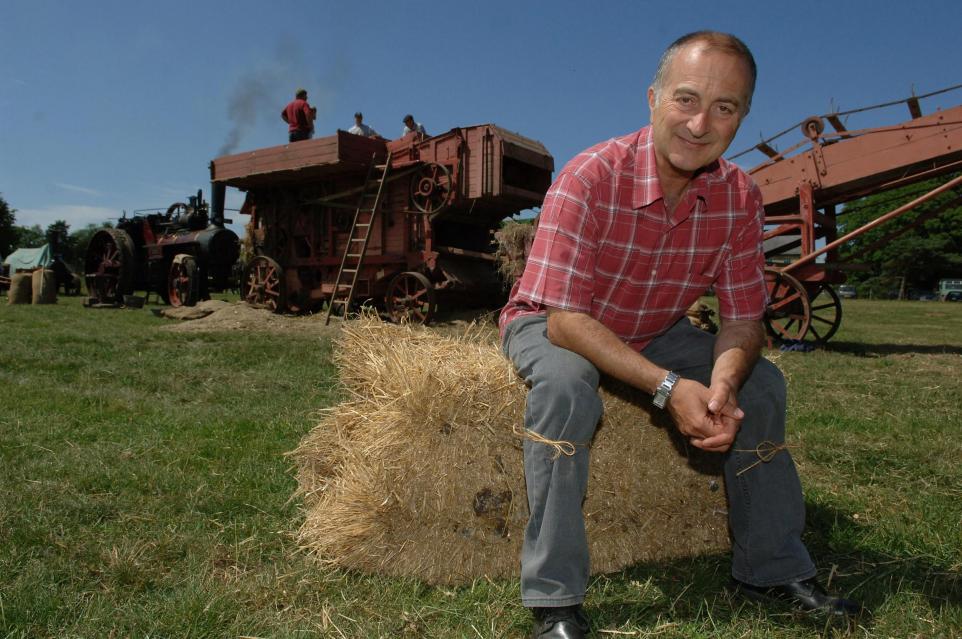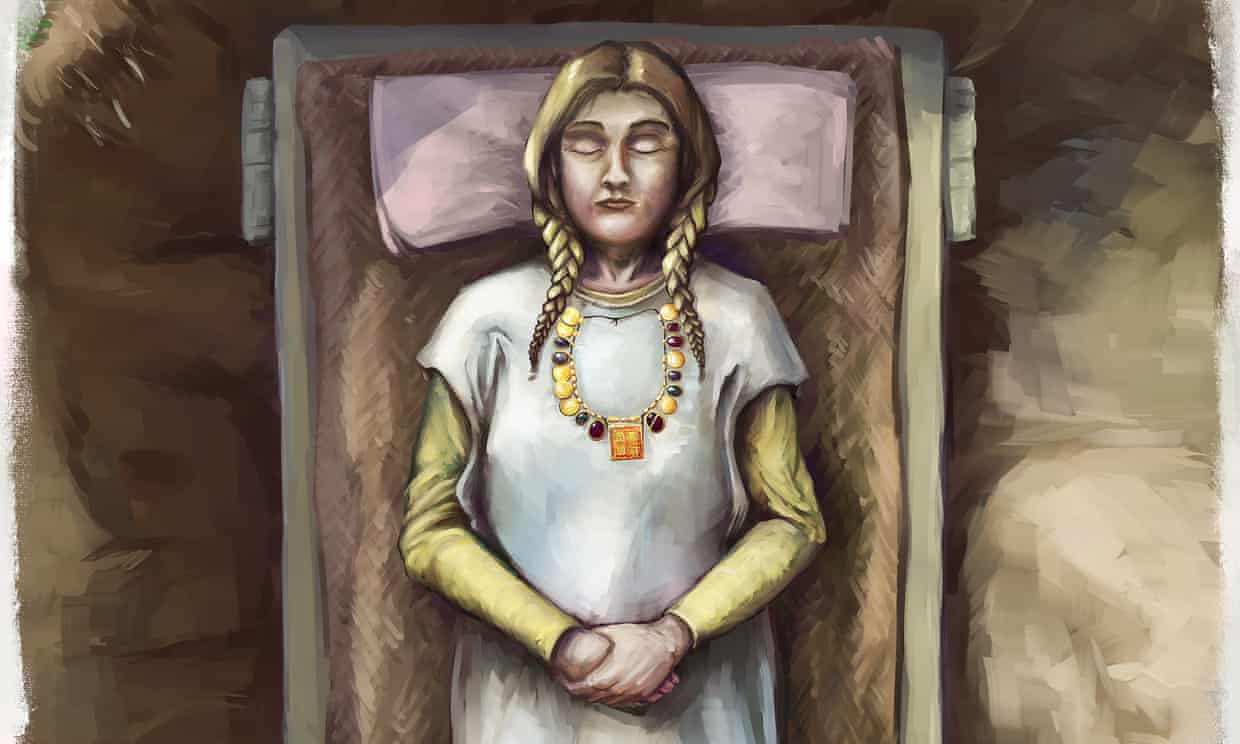A reconstruction of the burial site near Harpole in Northamptonshire.
Photograph: MOLA (Museum of London Archaeology)
Find dating from about 650AD in Northamptonshire includes jewelled necklace and changed archaeologists’ view of the period
Archaeologists don’t often bounce with excitement, but the Museum of London archaeology team could hardly contain themselves on Tuesday as they unveiled an “exhilarating” discovery made on the last day of an otherwise barren dig in the spring.
“This is the most significant early medieval female burial ever discovered in Britain,” said the leader of the dig, Levente Bence Balázs, almost skipping with elation. “It is an archaeologist’s dream to find something like this.”
“I was looking through a suspected rubbish pit when I saw teeth,” Balázs added, his voice catching with emotion at the memory. “Then two gold items appeared out of the earth and glinted at me. These artefacts haven’t seen the light of day for 1,300 years, and to be the first person to see them is indescribable. But even then, we didn’t know quite how special this find was going to be.”
What Balázs had found was a woman buried between 630 and 670 AD – a woman buried in a bed alongside an extraordinary, 30-piece necklace of intricately-wrought gold, garnets and semi-precious stones. It is, by a country mile, the richest necklace of its type ever uncovered in Britain and reveals craftsmanship unparalleled in the early medieval period.
Read the rest of this article...




